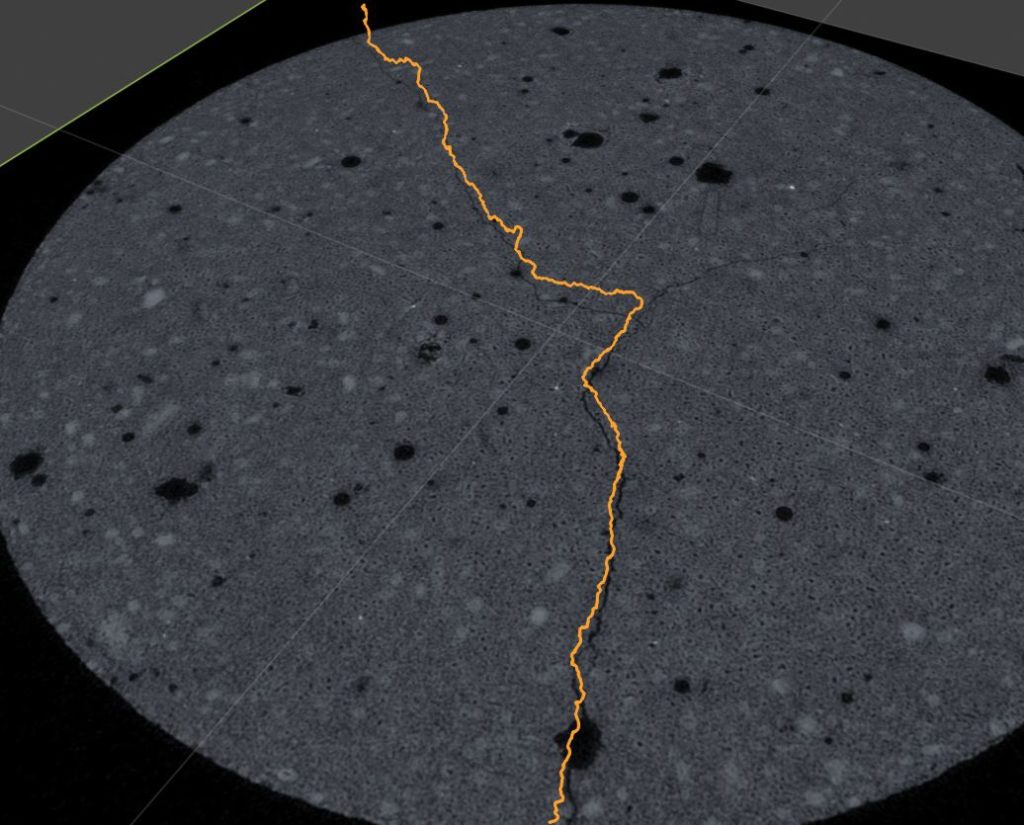
In the following we will present some technical steps used to extract topological information on cracks inside a material :
- segment crack(s) area inside material using image processing techniques
- compute Delaunay triangulation associated to this segmented area
- compute dual Voronoi diagram to help study of crack(s) topology
- compute for example crack(s) depth/length using graph theory
We start with a X-ray microCT 3d image stack such as the following :
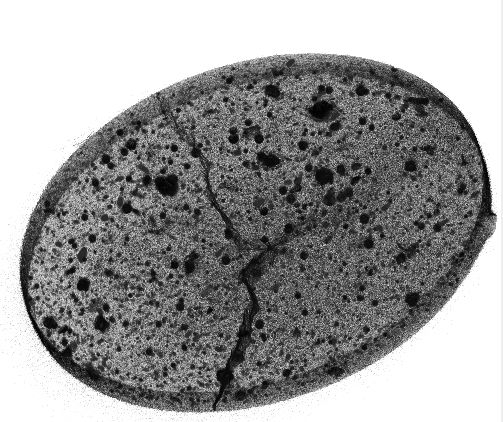
Initial image processing step
We first extract crack(s) area using classical image processing techniques :
- edge preserving smoothing operation (such as anisotropic diffusion or bilateral filter) to remove noisy data
- edge enhancement operation (gradient/laplacian filtering)
- connected components analysis and filtering (removal of small particules)

Delaunay triangulation
Once crack(s) area segmented we compute associated Delaunay triangulation :
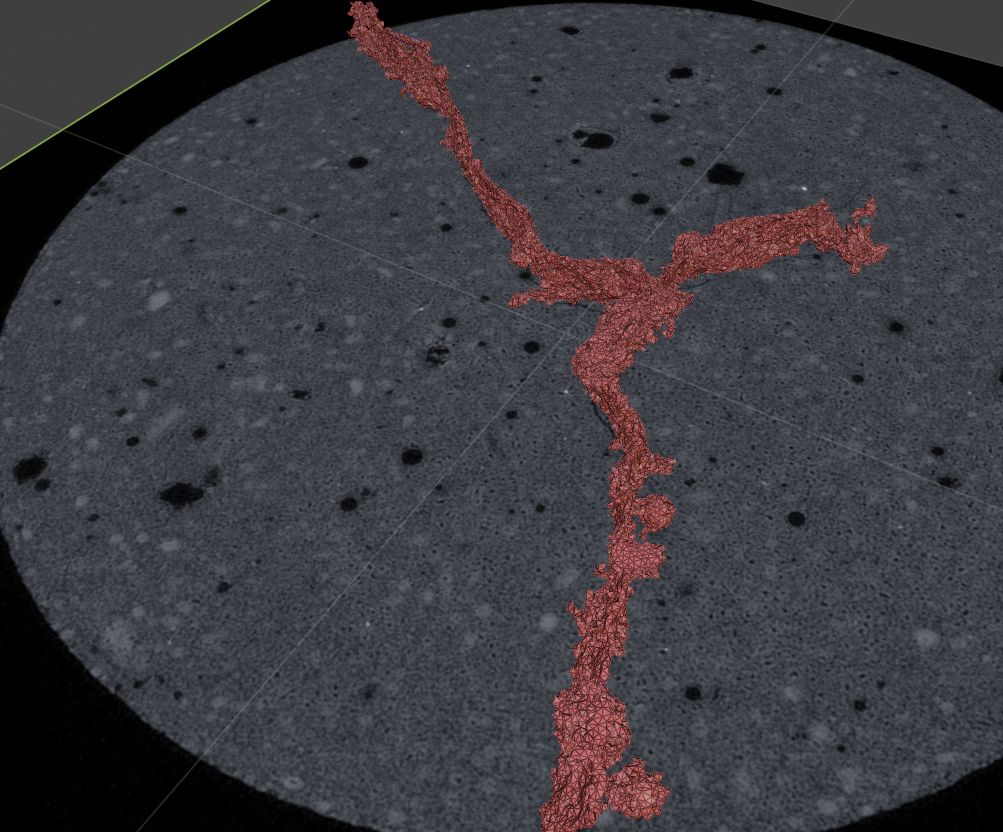
Voronoi diagram
The associated dual voronoi diagram is then computed to help study crack(s) topology :
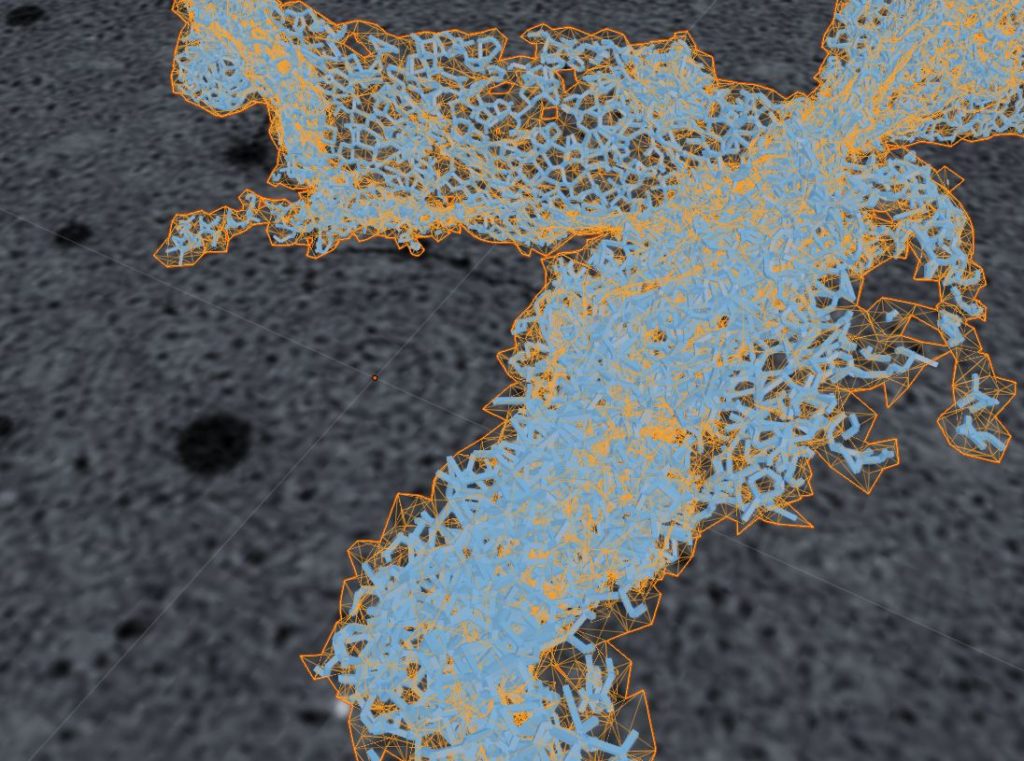
Topology analysis
At last we make some topology analysis on crack(s) area. In this case we use for example graph theory to compute « graph diameter » associated to crack(s) area :
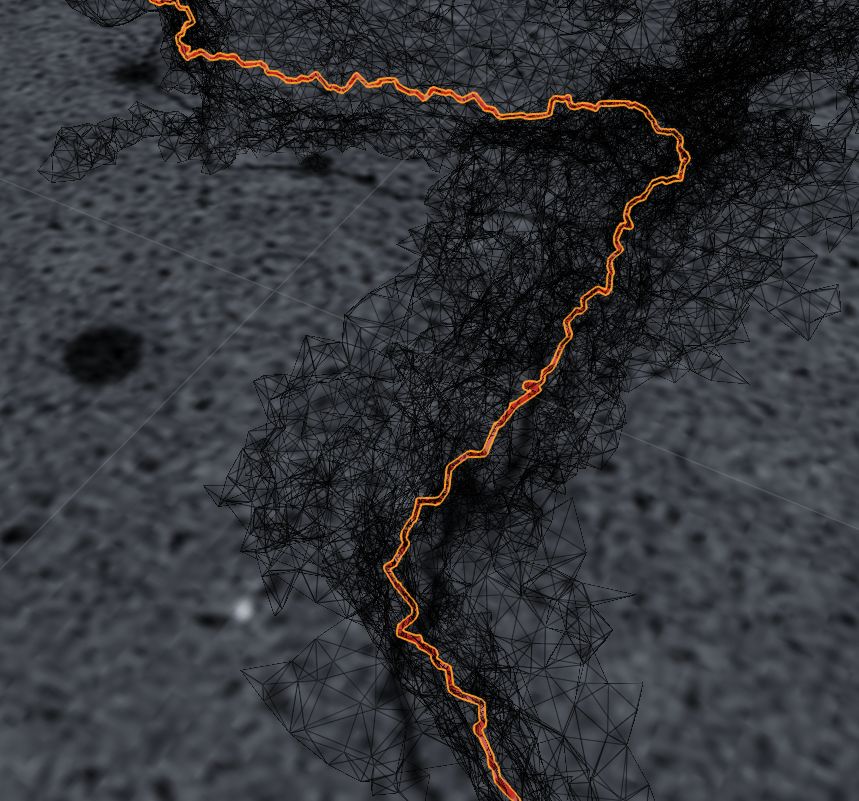
Alternative way
Note that an easier way (less complex but also less powerful) to explore such crack(s) area consists in an image processing only approach using specific distance map processing.
This technique allows to simply obtain depth map such as the following :
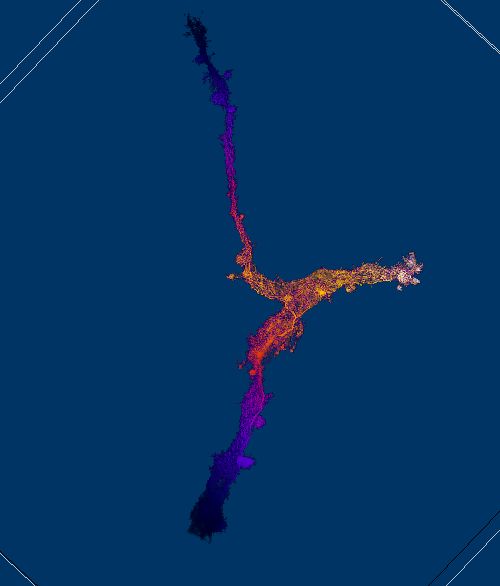
Copyright ED-CMS SASU, all right reserved.
